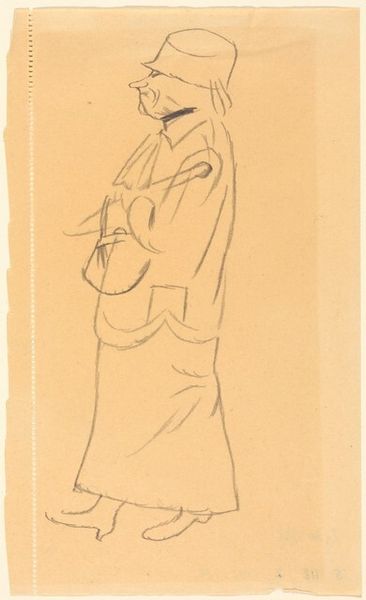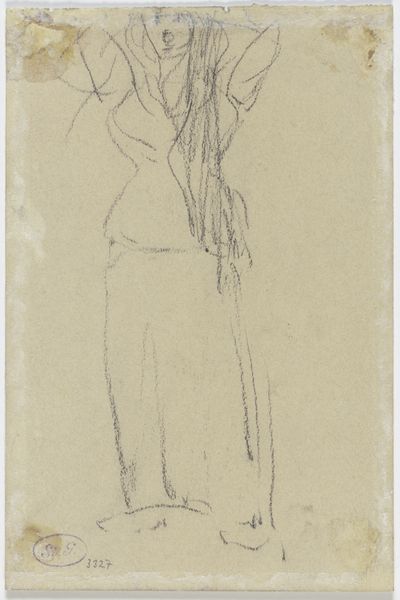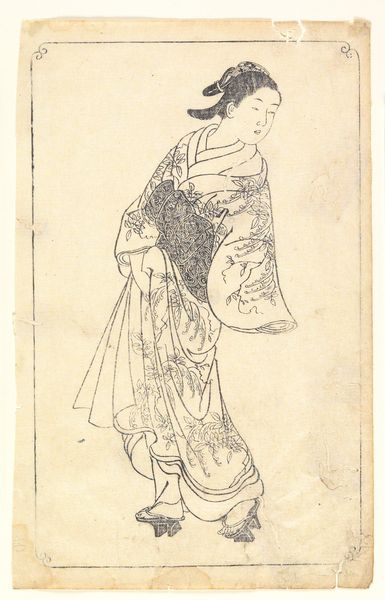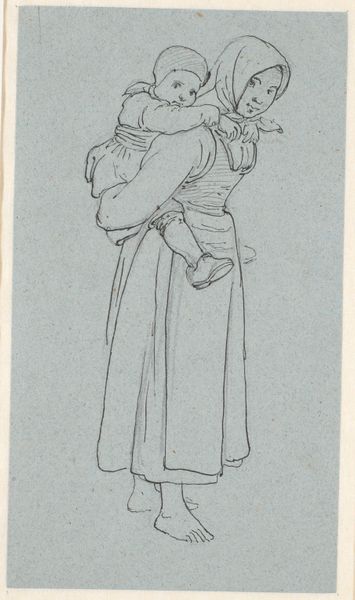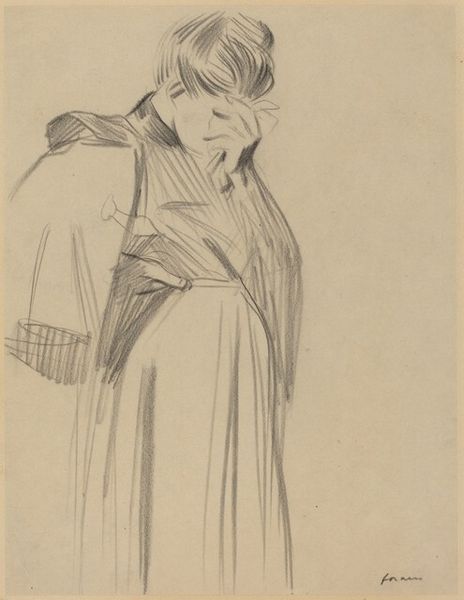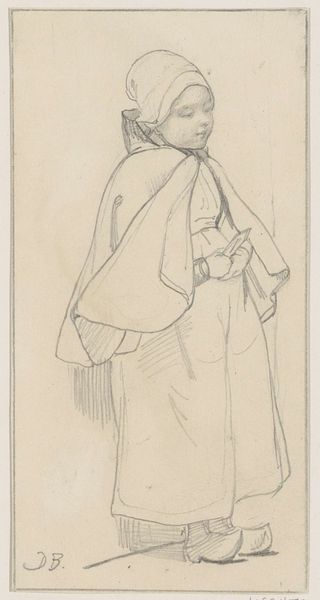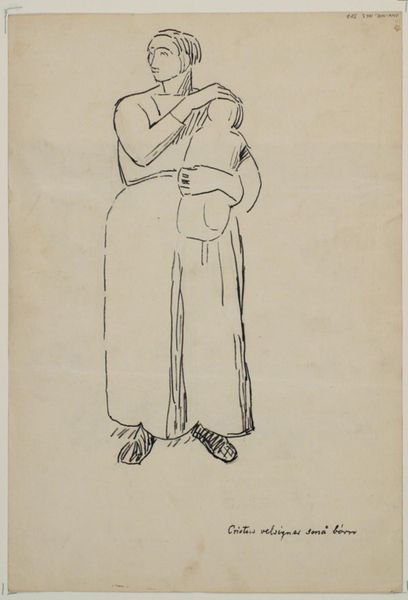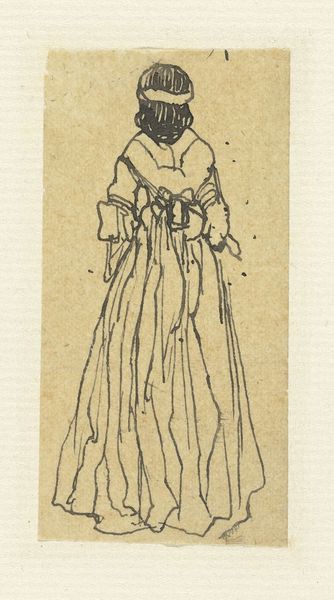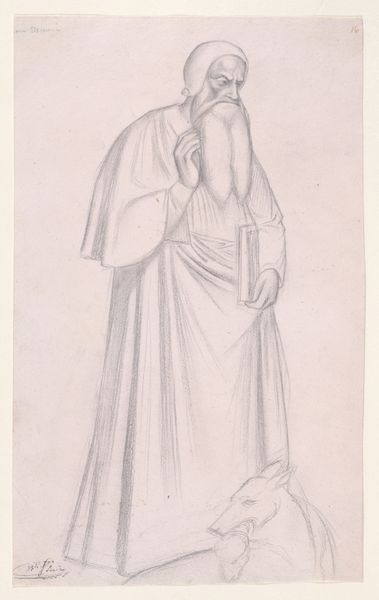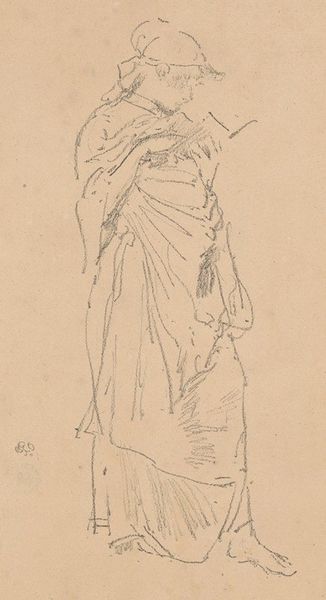
drawing, pencil
#
portrait
#
drawing
#
figuration
#
pencil
#
realism
Dimensions: height 310 mm, width 128 mm
Copyright: Rijks Museum: Open Domain
Curator: Here we have "Standing Girl from Huizen," a pencil drawing by Richard Nicolaüs Roland Holst from 1898. It’s part of the Rijksmuseum collection. Editor: There’s something so quietly melancholy about this image. The young woman seems lost in thought, or perhaps just a little weary. It’s a stark, simple composition that makes it feel surprisingly intimate. Curator: It’s a lovely example of realist portraiture of the time, and a window into the lives of young women in rural Dutch communities at the end of the 19th century. Look at the deliberate choice of pencil – its immediacy lends itself well to capturing a likeness so directly and naturally. I’m particularly drawn to the artist’s skillful, sparse technique and handling of light. Editor: It is tempting to consider the drawing itself a material object reflecting a socio-political context. For instance, pencil production required graphite mines, lumber for the casings, labor organizing around factory production, distribution systems, and finally this economic transaction of the artist buying the pencil. This all culminated in the creation of a representational depiction, and perhaps perpetuation, of a young woman's place in society. I can’t help thinking about her dress, the long simple lines, presumably made from hand-woven and dyed materials reflecting long, laborious textile production processes and practices. Curator: I see what you mean. There’s a strong contrast between the simplicity of the artwork's execution and the inherent complexities of the depicted sitter. Did she imagine her life would somehow persist in time through this particular medium? Does her image, once etched in graphite on paper, become inextricably bound with those economic and production histories? Perhaps her solemnity reflects the sheer physical work that made up her days. Editor: Exactly! Every element of the image reflects the complex material networks of the period. It's about how materials, labour, and art intertwine and transform our understanding of even a seemingly simple portrait. Curator: I think, at its heart, Holst captured a certain feeling about a fleeting moment that feels incredibly timeless. I'll always feel moved by its intimacy and gentle strength. Editor: And for me, seeing this has definitely shifted how I perceive drawings within a wider sphere of making and economy, giving us a glimpse into past ways of being, creating, and making meaning.
Comments
No comments
Be the first to comment and join the conversation on the ultimate creative platform.
